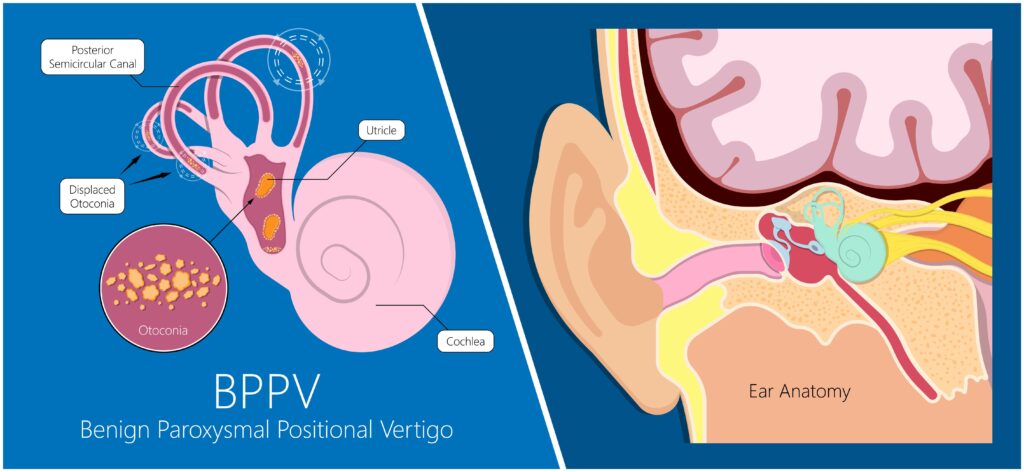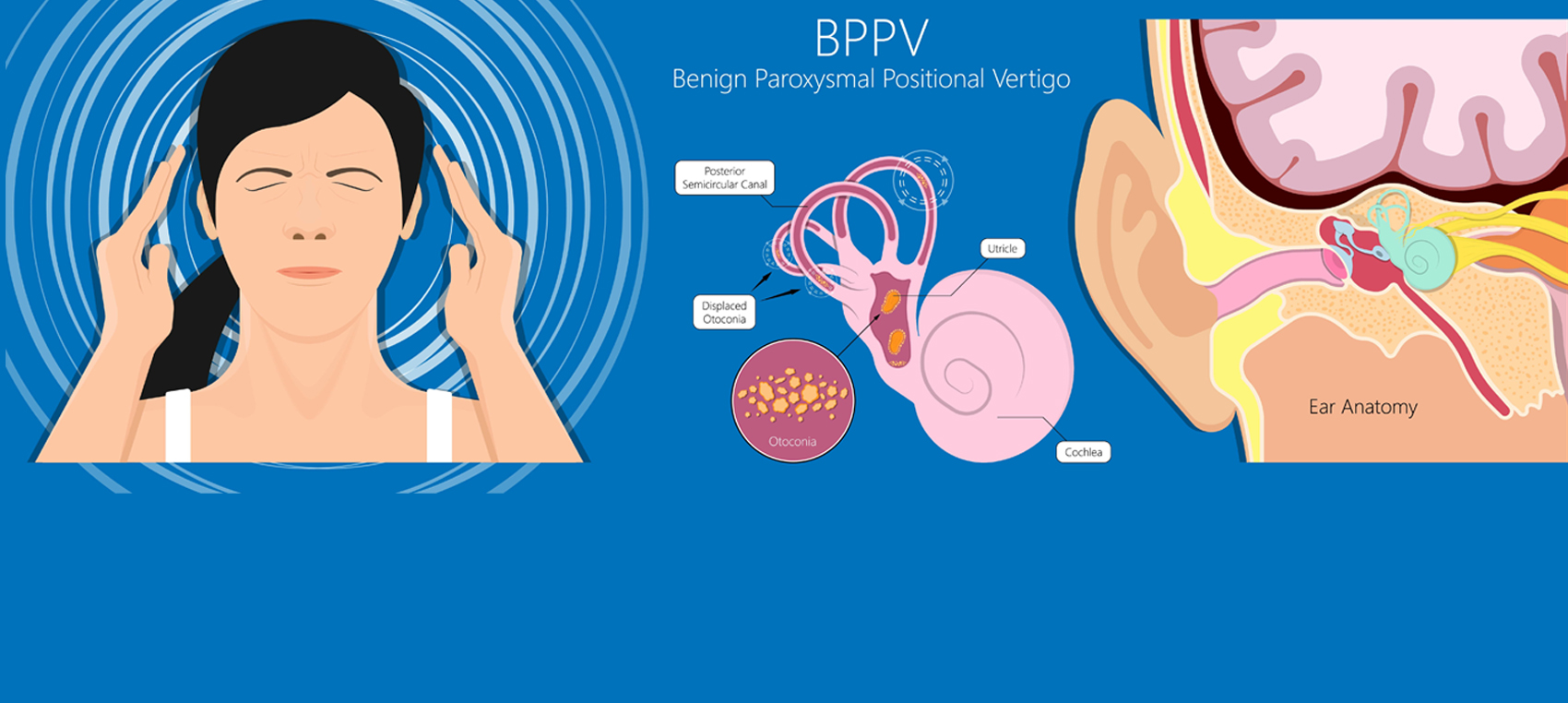Professionally reviewed by Kelley Limbauan, PT, DPT, NCS, on 03/14/2023.
In Benign Paroxysmal Positional Vertigo (BPPV), inner ear debris causes dizziness. Known as “ear rocks or crystals,” this debris consists of small calcium carbonate particles. They are located in structures called “otoliths” that have been damaged by head injury, infection, inner ear disorder, age or multiple other circumstances.
BPPV Symptoms
BPPV is a type of vertigo that can cause intermittent dizziness, lightheadedness, imbalance and nausea. While specific activities vary, symptoms are almost always precipitated by a position change of the head or body, such as getting out of bed, rolling side to side or tipping the head back to look up.
What Causes BPPV?
While the cause remains unknown in many patients, specific events or conditions are thought to cause episodes in others. The most common among people under 50 years old is head injury. Among older people, degeneration of the inner ear vestibular system can cause BPPV.

Diagnosis
Diagnosis is based on history and physical examination as well as vestibular and auditory tests. Other diagnostic studies, such as a VNG, look for the characteristic nystagmus (jumping of the eyes) and/or an MRI to rule out stroke or brain tumor, may be performed. BPPV can occur in both ears, which can make diagnosis and treatment more challenging.
BPPV Treatment
BPPV is “self-limiting” because symptoms may subside or disappear within six months. Motion sickness medications are sometimes helpful in controlling nausea. Various maneuvers, techniques and exercises have been proven to be quite effective and may be used during physical therapy treatments. Dependent on the cause, surgery, although rare, may be recommended and would be further discussed by your doctor.
The Epley and Semont Maneuvers
Usually performed in your health-care provider’s office, the Epley and Semont repositioning maneuvers are very effective, curing roughly 80 percent of patients. Recurrence after these maneuvers is about 5 percent.
Named after their inventors, both maneuvers strive to move the crystals out of the sensitive parts of the inner ear to a less sensitive location of which should take about 10 minutes.
Both maneuvers involve specific sequential movements of the head and body.
Following the treatment by your physical therapist or health-care provider, you will be asked to follow the instructions issued and explained to you.
What if Maneuvers Don’t Work?
Persistent cases may require additional treatment sessions as well as home exercises. You may also be asked to follow up with your doctor for other diagnostic testing. If symptoms persist longer than one year, surgery may be indicated. This procedure poses small risk to hearing.
How Might BPPV Affect My Life?
Daily adjustments may help with dizziness. Use two or more pillows at night. Avoid sleeping on the effected side. In the morning, get up slowly and sit on the edge of the bed for a minute. Avoid bending down to pick up objects, and be careful when at the dentist’s office, beauty parlor, sports or positions where your head is overly flexed or extended.
Locations
Good Shepherd offers BPPV treatment at a number of our outpatient throughout the Lehigh Valley, including:
Request an Appointment
To request an appointment with one of our BPPV or vestibular rehabilitation specialists, call 1.888.44.REHAB (73422) or fill out the form below.


